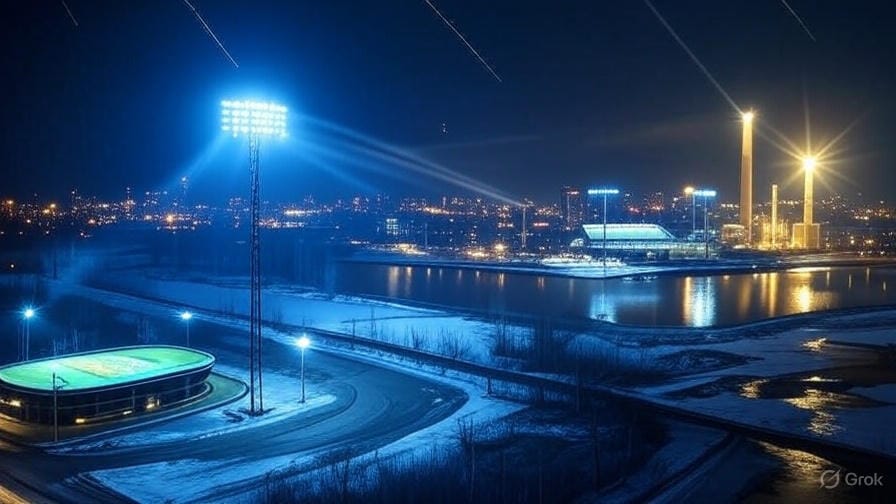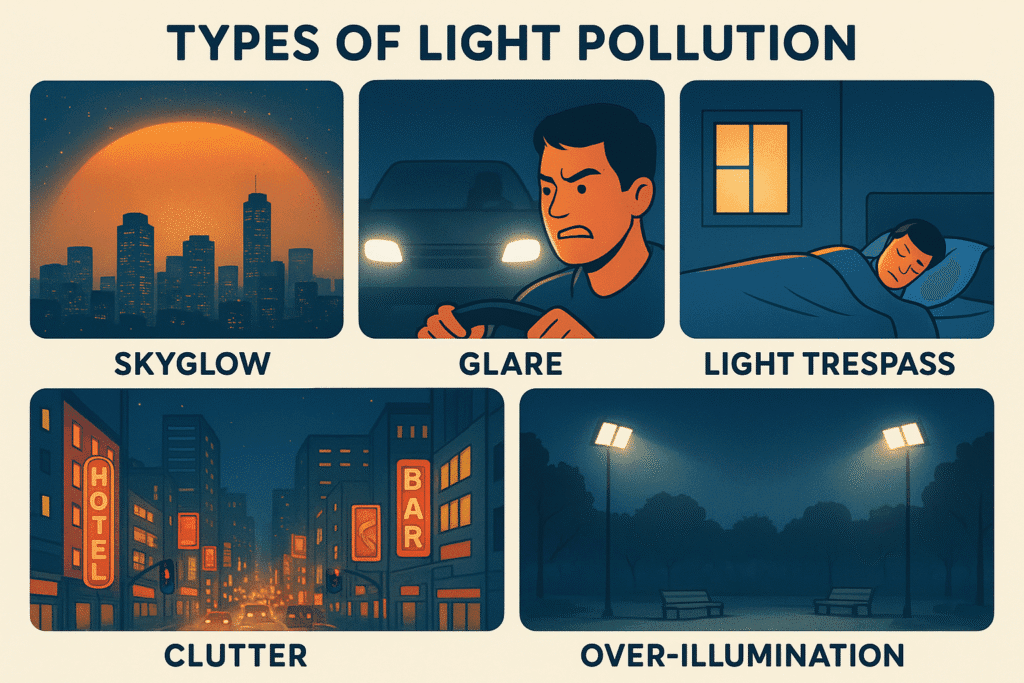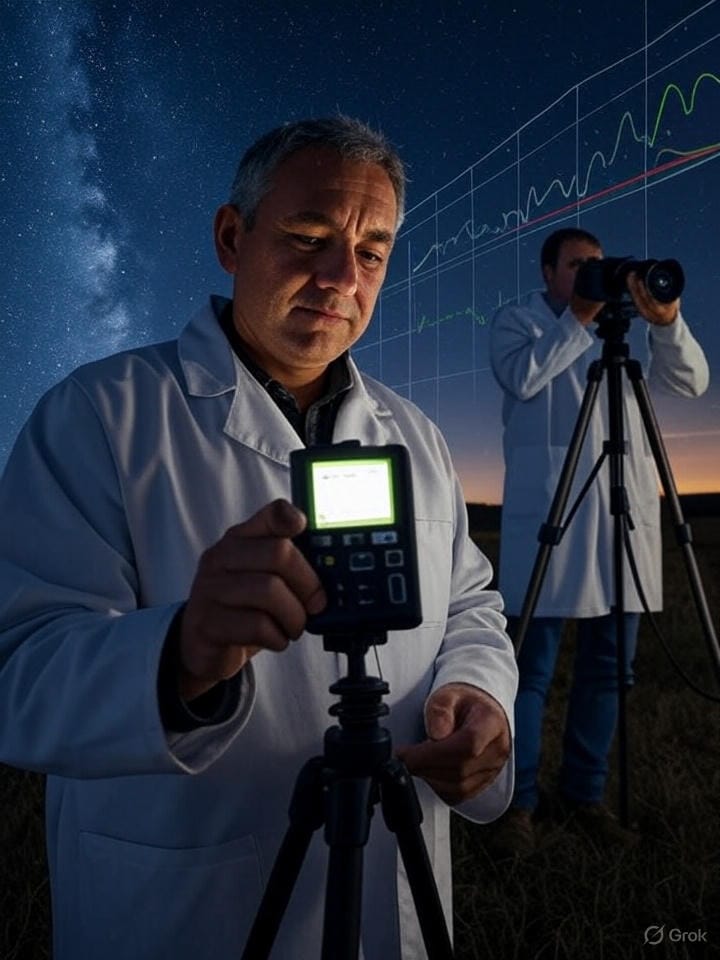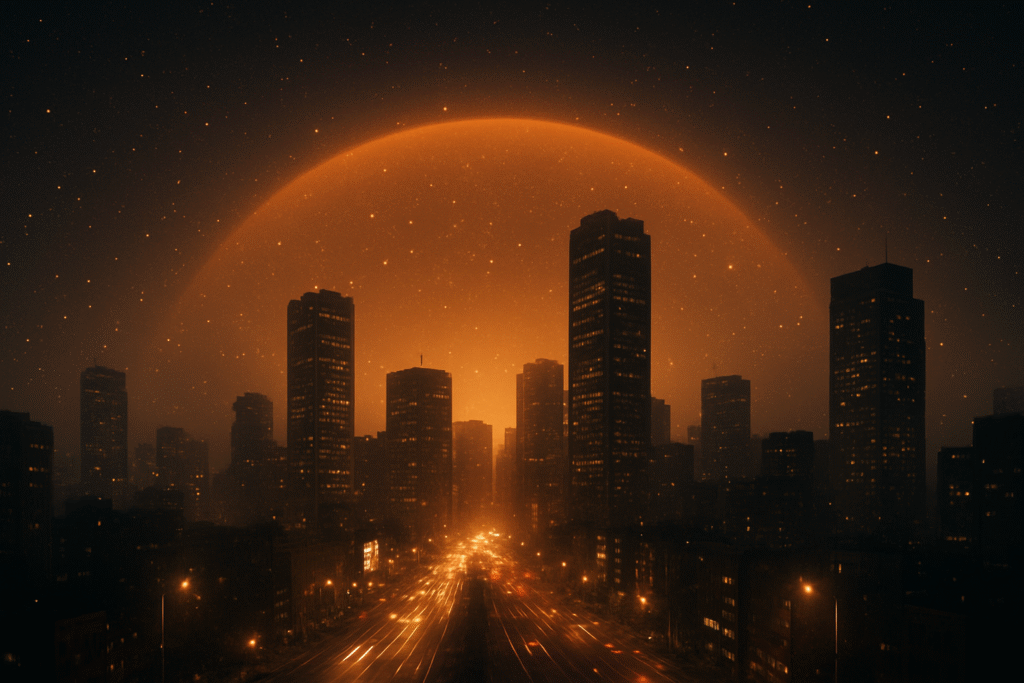
Table of Contents
ToggleThe science of light pollution
Imagine a clear night sky over a bustling city but instead of twinkling stars you see a hazy orange dome that washes out the beautiful view. That’s the feature of artificial light at night (ALAN), the sneaky culprit behind light pollution. Our planet enjoys a natural veil of darkness but is now invaded by human-made illuminations like streetlights, billboards and car headlights. Scientifically it’s all about photons (tiny packets of light energy) that create a flood in the environment.
Let’s break down the physics. Light pollution isn’t just about brightness it’s also about the type of light. For example, modern LEDs give off a strong blue like that scatters easily in the atmosphere which makes the sky look hazy. Even dim light (about as much as a TV screen in a dark room) can affect us by lowering melatonin levels and disturbing sleep. Brighter lights, like floodlights or stadium beams push this impact much further.
When light escapes upward it doesn’t disappear. Molecules, best and pollution in the air scatter it around and create a glowing dome above cities. This effect gets magnified on a cloudy night or snowy winter evenings- sometimes it becomes thousands of times brighter. This constant glow does not just block stargazing; it also disrupts ecosystems, confuses nocturnal wildlife and even changes air chemistry. In short, ALAN is more than just “extra light.” It’s reshaping our nights and pushing us to reach how we use illumination in our cities & communities.

Types of Light Pollution: Mechanisms and Classifications
Let’s understand the science of light pollution- light pollution comes in various forms and each with its own optics, human perception and environmental physics. Many experts have broken this into five key types that are – skyglow, glare, light trespass, clutter, and over-illumination. They aren’t isolated – they often feed into each other and make the night sky a tangled web of unwanted light. I mean they are interconnected and here’s the explanation :-
What is Skyglow? The Hazy Urban Halo
Skyglow is a soft & glowing dome over cities that drowns out stars. It starts when light from the ground goes upward and scatters in the atmosphere. Rayleigh scattering is the main player here: air molecules like oxygen and nitrogen prefer to bounce shorter blue wavelengths (it comes from modern LEDs) more than longer wavelengths such as red. This creates a widespread haze. On a clearer night, this can brighten the sky 20-100 times over natural levels and it affects animals’ internal clocks and plant growth cycles.
What is Glare? The Blinding Overload
Glare is the sharp & uncomfortable brightness that hits your eyes head-on which seems like staring into an oncoming headlight. It splits into two parts: disability glare where intense light scatters within your eye’s structures (cornea and lens) and creates a veil that cuts contrast by up to 50% and makes it hard to see details. Another one is discomfort glare- a nagging irritation from retinal overload that sparks headaches without full blindness. Blue-rich lights from energy-efficient bulbs worsen this by mimicking daylight’s intensity and reducing night vision which raises accidents.
What is Light Trespass? The Unwanted Intrusion
This is light sneaking where it shouldn’t- like a bright porch light flooding your bedroom window. It’s basically a poor fixture design that allows photons to keep at wide angles (over 80 degrees from vertical). Even low doses like, around 10 lux can also disrupt sleep by suppressing melatonin which is our body’s darkness hormone that causes sleep. It confuses migration patterns in wildlife and draws nocturnal creatures into danger.
What is Clutter? The Chaotic Jumble
Imagine a busy downtown at night: signs, ads and vehicles that create a visual mess. Letter overload overloads the brain’s visual processing where neurons meant for edge detection get swamped and it slows down reactions and boosts stress. It’s perceptual chaos that is amplified by dense urban setups and it indirectly worsens other pollutions by encouraging more lights to “cut through” the noise.
What is Over-Illumination? The Needless Excess
So at last, over illumination is just too much light more than is required. Like using flood lights for a sidewalk stroll. We only need 1-5 lux to walk safely but generally these lights offer 50+ lux causing wastage of energy and rebounding into skyglow. Spectral issues play in: blue LEDs feel harsher to our green-sensitive night vision, and trap birds in lit buildings.

What are the Sources of Light Pollution
Artificial light at night comes proper diverse array of human-made equipment and each of them carries distinct emission profiles that dictate their contribution to environmental disruption. Urban LEDs dominate modern landscapes by emitting broad-spectrum light with a pronounced blue peak around 450 nm which scatters efficiently in the atmosphere. It enhances sky blue by up to 8 times compared to traditional low pressure 8 times compared to traditional low-pressure sodium lamps.
These LEDs often feature high color temperatures that amplify visual discomfort and ecological interference. Street lights are another major culprit. They vary from high-pressure sodium variants that produce amber hues at 2000K, to metal halide fixtures that emit cooler & whiter light and boost glare in humid conditions.
Satellite and orbital debris add a new emerging layer by reflecting sunlight and creating short streaks in the sky. Industrial sites like mining operations release strong beams of light that spread across long distances. According to the U.S. National Park Service (NPS), satellite observations indicate that from 2012 to 2016, the area of Earth’s surface continuously lit at night increased by 2.2% per year
Other sources include advertising billboards and sports stadiums where excessive lighting (sometimes making up 20 -50% of total outdoor energy use) wastes electricity and adds to light pollution in crowded cities. And that’s what the science of light pollution is about.
Some conditions make the problem worse. Reflective surfaces like snow or water bounce light back into the sky which increases brightness by 15-30% during winters. The shape of the land also matters: valleys trap light and hills spread it further. Aerosols in the air also scatter this light. Cities with poorly designed lighting send about 30% of their light directly into the sky.

How We can Measure Light pollution from ground
Measuring Light pollution from the ground uses simple but effective methods to track how bright the night sky is under different conditions. One of the most common tools is the Sky Quality Meter (SQM). These are small and affordable devices that measure sky brightness in special units called magnitude per square arcsecond. Reading above 21 means very dark natural skies whereas 15 indicates heavy light pollution in cities.
SQMs are often linked in networks for real-time monitoring but they need regular calibration because their sensors slowly lose accuracy over time. Another approach is all-sky photometry which uses DSLR or CCD cameras with fisheye lenses to capture the whole sky at once. This method can measure brightness across different parts of the horizon and separate natural light sources like the Milky Way. However it needs careful corrections for clouds and other changing weather.
Spectroscopic tools can add more details. Devices like handheld spectrometers can identify which types of lamps are causing pollution by analysing their light spectrum – such as blue-rich LEDs or older sodium lights. Drones are also used now, they’re combined with GPS and cameras to locate sources of excess light. But their short battery life and flying restrictions can be a challenge.
Despite these hurdles like interference from aerosols or the high cost of advanced setups, new innovations are emerging. AI-powered sensors can now automate analysis and drone swarms are now being tested for large-scale mapping. Standardized methods are also helping researchers to share consistent data which makes it easier to protect sensitive environments.
FAQs
What is the science of light pollution and why does it matter?
The science of Light pollution studies how artificial light affects the night sky, ecosystems and human health. It looks at sources like streetlights, billboards, satellites and even reflective surfaces such as snow or water. By understanding these factors scientists can explain why skies in urban areas glow brighter and how it disrupts wildlife.
How do researchers study the science of light pollution?
Researchers use several ground-based and aerial tools to measure brightness and sources of light & study the science of light pollution. Some devices like Sky Quality Meters, all-sky cameras and spectrometers help to record night sky conditions. Drones and AI-based systems are also becoming popular for mapping polluted areas. Light pollution science combines these techniques with climate and geography data.
Which factors influence the science of light pollution most?
Key factors include excessive outdoor lighting, urban sprawl and reflective surfaces that scatter light. Aerosols, cloud cover and the shape of the land also play a role. In cities, up to 30% of light escapes directly into the sky due to poor design. Light pollution science helps us to connect these factors and identify where the targeted solution is more required.
